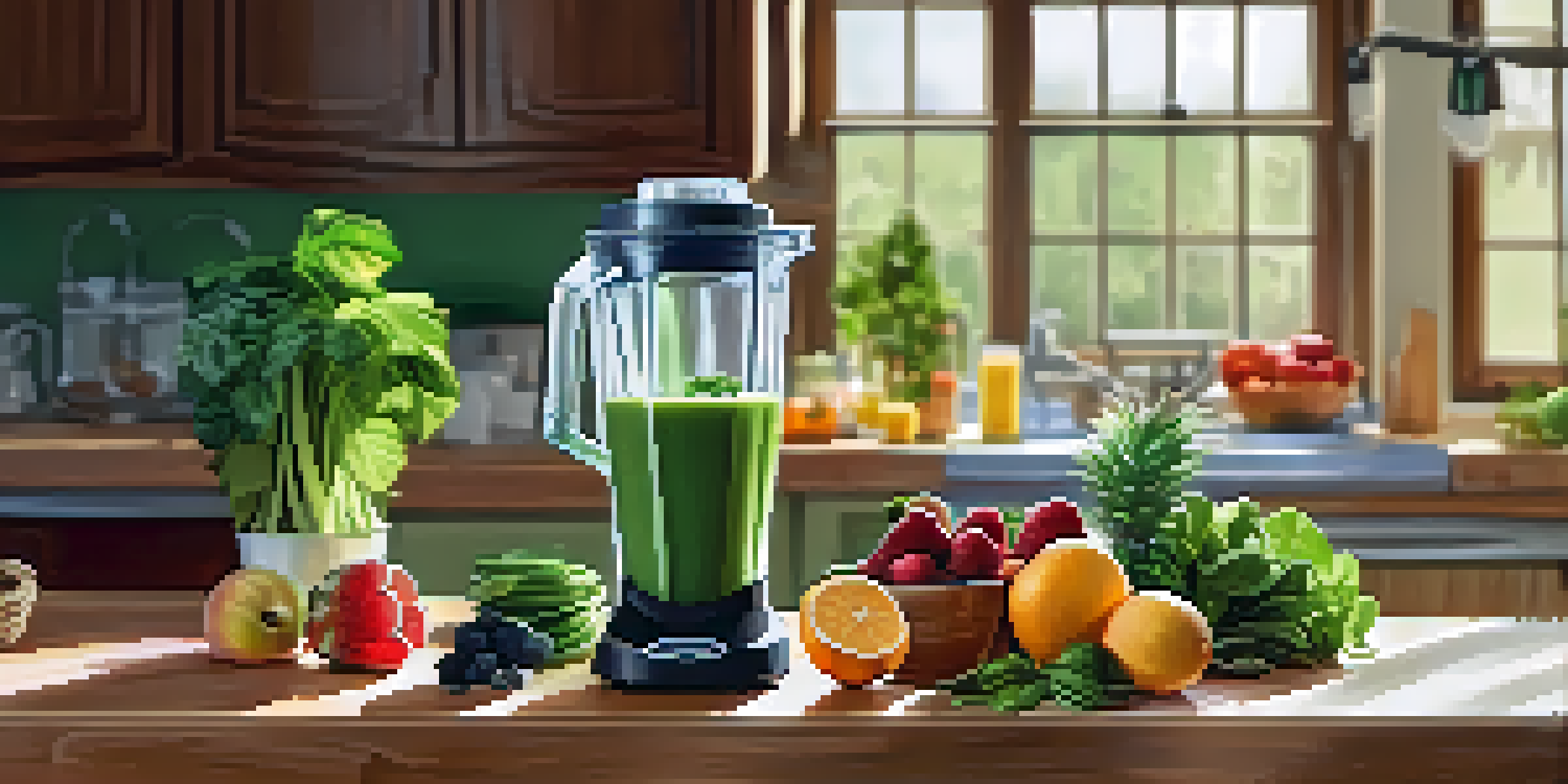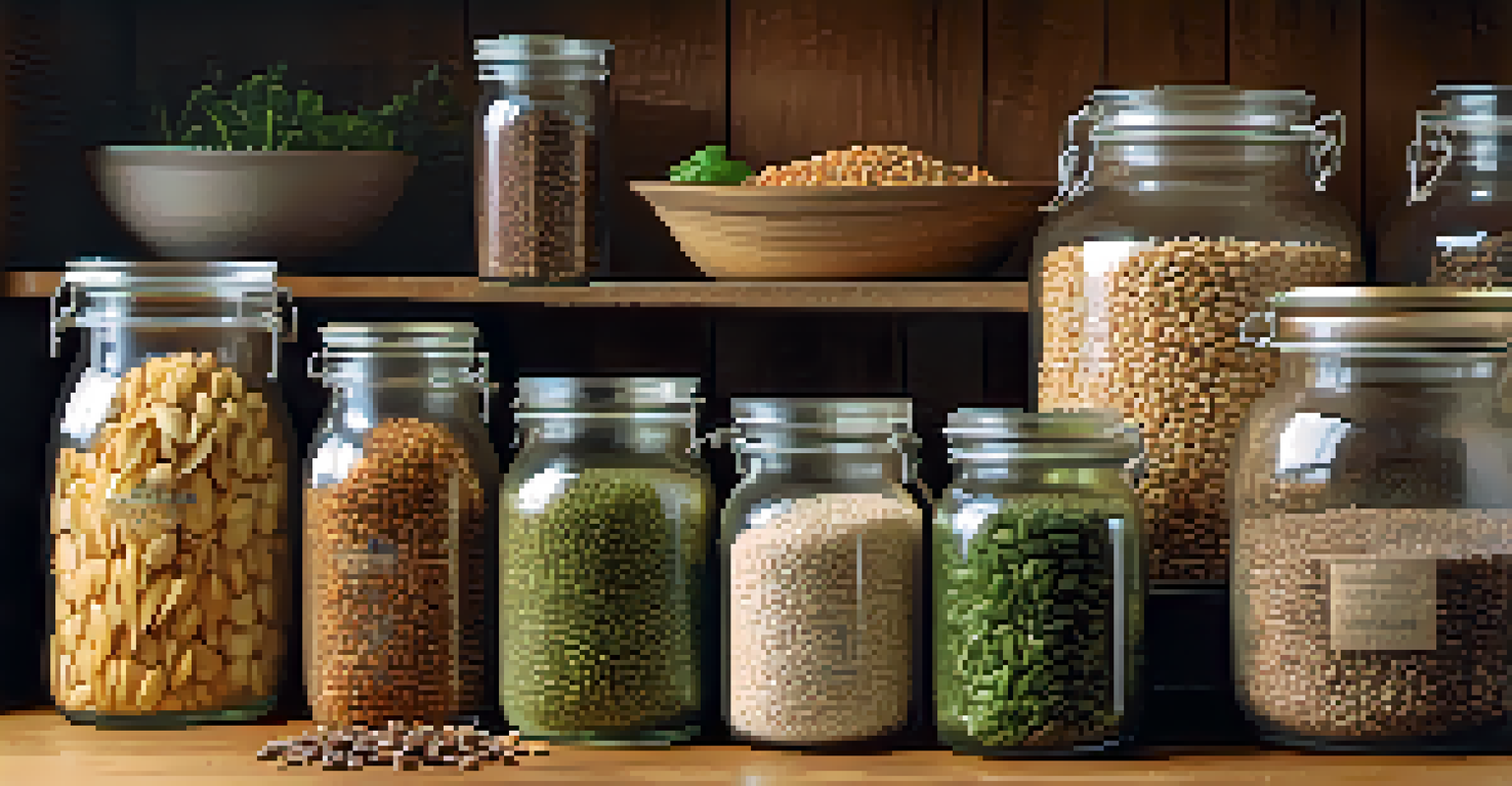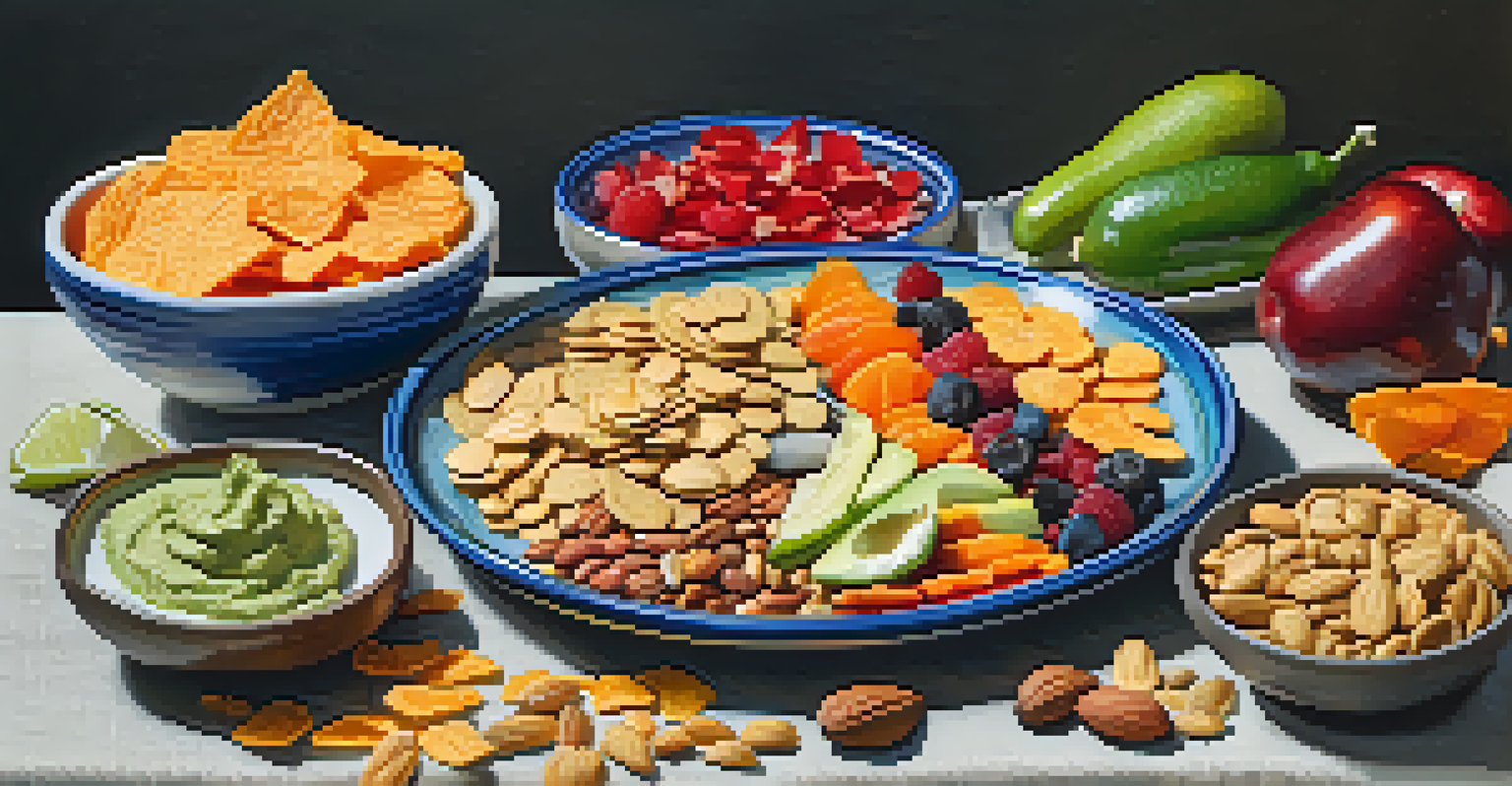The Complete Guide to Raw Food Cooking Tools and Equipment

Understanding Raw Food Cooking: A Brief Overview
Raw food cooking focuses on preparing meals with unprocessed, uncooked ingredients. This culinary approach emphasizes the use of fresh fruits, vegetables, nuts, and seeds, promoting health and nutrition. Many advocates believe that heating food above 118°F destroys essential nutrients and enzymes, which are crucial for optimal health.
Let food be thy medicine and medicine be thy food.
The philosophy behind raw food cooking encourages creativity in the kitchen, allowing you to explore flavors and textures in new ways. It's not just about salads; you can create a diverse range of dishes like smoothies, dehydrated snacks, and even gourmet entrees. Understanding this cooking style is the first step toward building a well-equipped kitchen for raw food preparation.
As we dive deeper into the tools you'll need, keep in mind that having the right equipment can make raw food cooking easier and more enjoyable. From blenders to sprouters, each tool serves a unique purpose in bringing your raw recipes to life.
Essential Kitchen Appliances for Raw Food Prep
When it comes to raw food cooking, a high-quality blender is your best friend. Look for a blender that can easily handle tough ingredients like frozen fruits or leafy greens, ensuring a smooth consistency for your smoothies and soups. Brands like Vitamix and Blendtec are popular among raw food enthusiasts for their power and durability.

A food processor is another critical appliance that can save you time and effort. It’s perfect for chopping, slicing, and mixing, allowing you to create everything from raw pesto to veggie burgers. The versatility of a food processor means it can handle a variety of tasks, making it an indispensable tool in your raw food kitchen.
Raw Food Cooking Essentials
Understanding the importance of fresh, unprocessed ingredients is key to embracing a raw food lifestyle.
Lastly, consider investing in a dehydrator, which opens up a world of possibilities. Dehydrators allow you to create snacks like raw crackers, fruit leathers, and even jerky, all while preserving the nutrients in your ingredients. This tool can help you explore textures and flavors that are otherwise challenging to achieve with traditional cooking methods.
Cutting and Preparing Ingredients: Knives and Boards
While appliances play a significant role in raw food preparation, the importance of good knives and cutting boards cannot be overstated. A sharp chef’s knife is essential for efficiently chopping vegetables and fruits. Investing in a quality knife not only makes your prep work easier but also enhances your overall cooking experience.
The greatest wealth is health.
Cutting boards come in various materials, such as bamboo, plastic, or wood, each having its pros and cons. Bamboo boards are eco-friendly and naturally resistant to bacteria, while plastic boards can be more forgiving when it comes to cleaning. Choose a size that fits your kitchen space and meets your chopping needs, ensuring you have enough room to work comfortably.
Having a dedicated set of knives and boards for your raw food prep can help maintain hygiene and prevent cross-contamination. To keep your tools in tip-top shape, make sure to clean and sanitize them regularly, so you can enjoy a safe and healthy cooking environment.
Blending and Juicing: Creating Smoothies and Juices
Smoothies and juices are staples in the raw food diet, and the right equipment can elevate your beverage game. A powerful blender can turn even the toughest greens into a creamy smoothie, while a juicer can extract the nutrients from fruits and vegetables to create refreshing drinks. Understanding the difference between the two will help you decide which one to invest in.
When selecting a juicer, consider whether you want a centrifugal or masticating juicer. Centrifugal juicers are generally faster but may produce less juice and can heat the ingredients. Masticating juicers operate at a slower speed, preserving more nutrients and yielding a higher juice quantity, making them a popular choice among raw food enthusiasts.
Must-Have Kitchen Appliances
Investing in essential tools like high-quality blenders, food processors, and dehydrators can simplify and enhance your raw food preparation.
Experimenting with different combinations of fruits and vegetables can lead to delicious, nutrient-packed drinks. Don’t hesitate to add ingredients like nuts, seeds, or even superfoods like spirulina to boost your smoothies and juices to the next level.
Sprouting: Why You Need a Sprouter
Sprouting is a fantastic way to enhance the nutritional value of your meals, and a dedicated sprouter makes this process simple and effective. Sprouted grains, beans, and seeds are packed with vitamins and enzymes, making them a great addition to salads, wraps, and smoothies. A sprouter allows you to cultivate these nutritious powerhouses right at home.
There are various types of sprouters available, from simple jars to more sophisticated multi-tiered systems. The choice depends on your space and how many varieties you’d like to grow simultaneously. Regardless of the type you choose, the process is generally straightforward and requires minimal effort.
By incorporating sprouted foods into your diet, you’ll not only boost your nutrition but also add exciting textures and flavors to your dishes. Plus, watching your seeds transform into fresh sprouts can be a rewarding experience, deepening your connection to your food.
Dehydration: Unlocking Flavor and Texture with a Dehydrator
A dehydrator is a game-changer in the world of raw food cooking, allowing you to create a variety of flavorful snacks while preserving nutrients. Dehydrating fruits, vegetables, and herbs concentrates their flavors and extends their shelf life, which is perfect for meal prep or healthy snacking. You can even create raw chips or crackers for a satisfying crunch.
When selecting a dehydrator, look for one with adjustable temperature settings and good airflow. This ensures that your food dries evenly and at the right temperature, preventing spoilage. Brands like Excalibur and Nesco are often recommended for their quality and performance.
Proper Food Storage Techniques
Using airtight containers and vacuum sealers helps maintain the freshness of raw ingredients and reduces food waste.
Be sure to experiment with different flavors and ingredients when dehydrating. You might discover a new favorite snack or ingredient that enhances your raw food recipes, making the dehydrator a worthwhile investment for any raw food enthusiast.
Storage Solutions: Keeping Your Ingredients Fresh
Proper storage is essential for maintaining the freshness and flavor of your raw ingredients. Invest in high-quality containers that are airtight and BPA-free to keep fruits, vegetables, nuts, and seeds safe from moisture and air exposure. Glass jars and stainless steel containers are excellent choices that help you avoid plastic while being eco-friendly.
Labeling your containers can also streamline your cooking process, making it easy to find what you need when you're ready to prepare a meal. This simple practice can save you time and reduce food waste, ensuring you make the most of your raw ingredients.

In addition to containers, consider investing in a vacuum sealer for long-term storage. This tool removes air from bags, preventing freezer burn and extending the shelf life of your ingredients, allowing you to stock up on seasonal produce and enjoy it year-round.